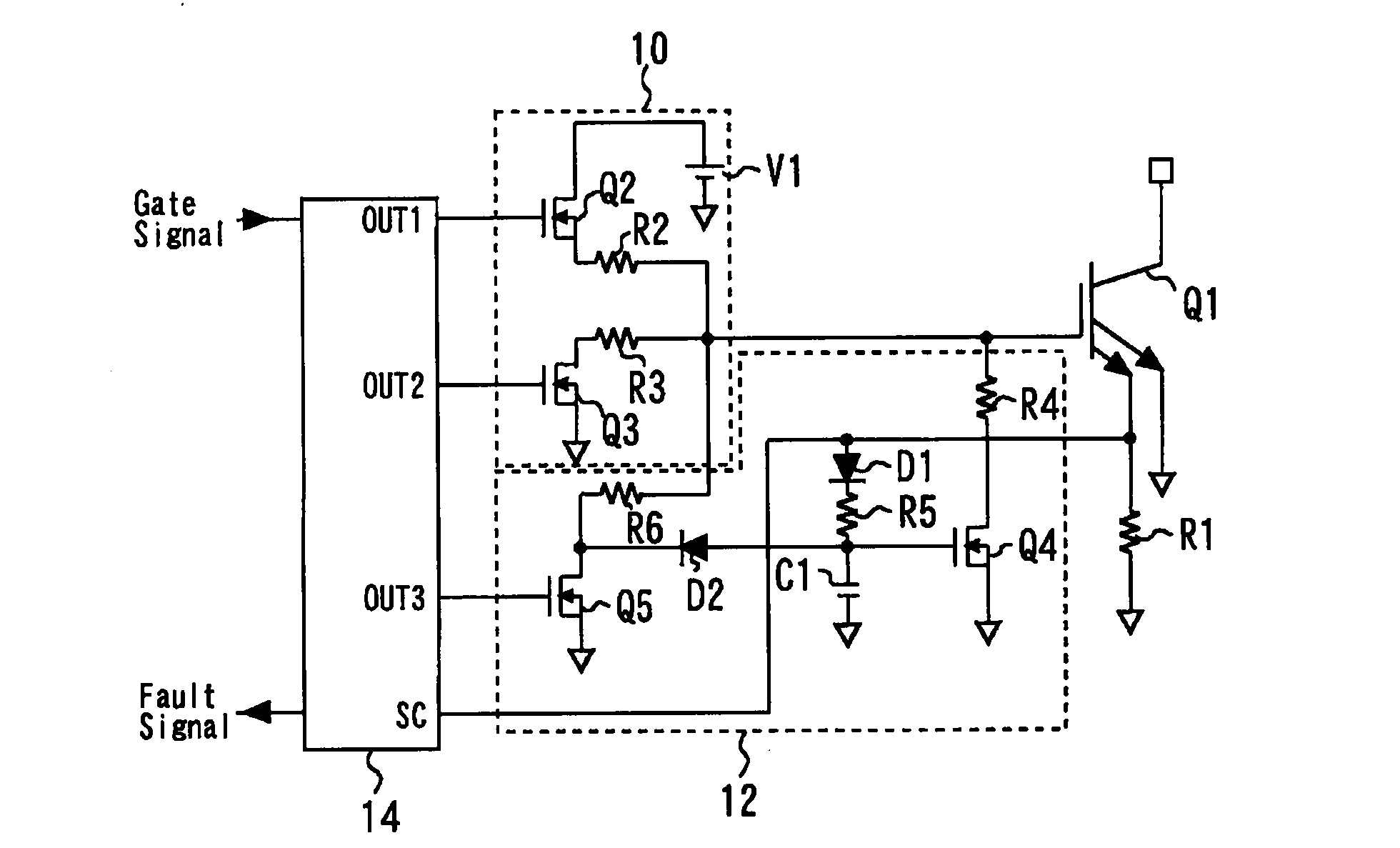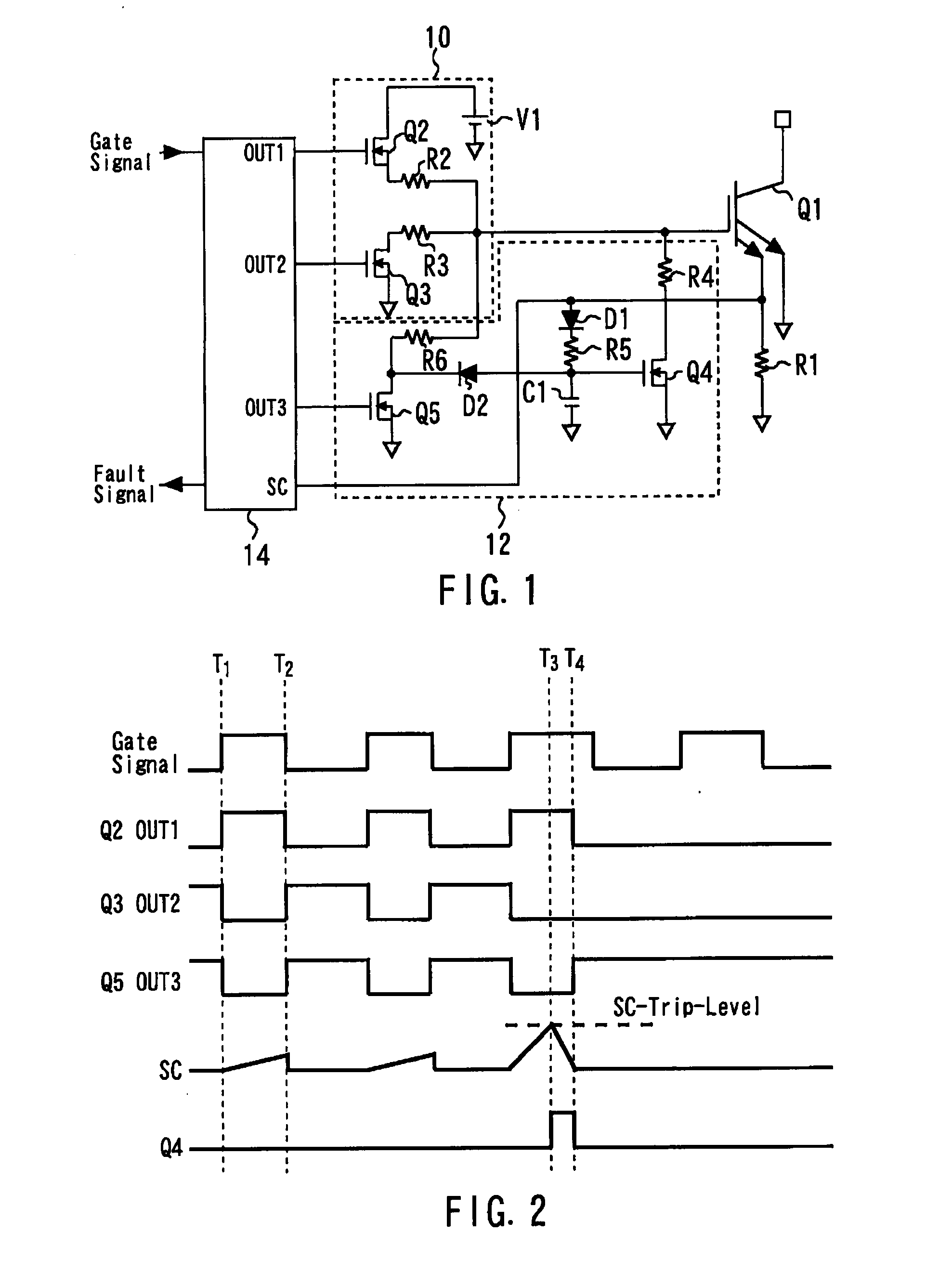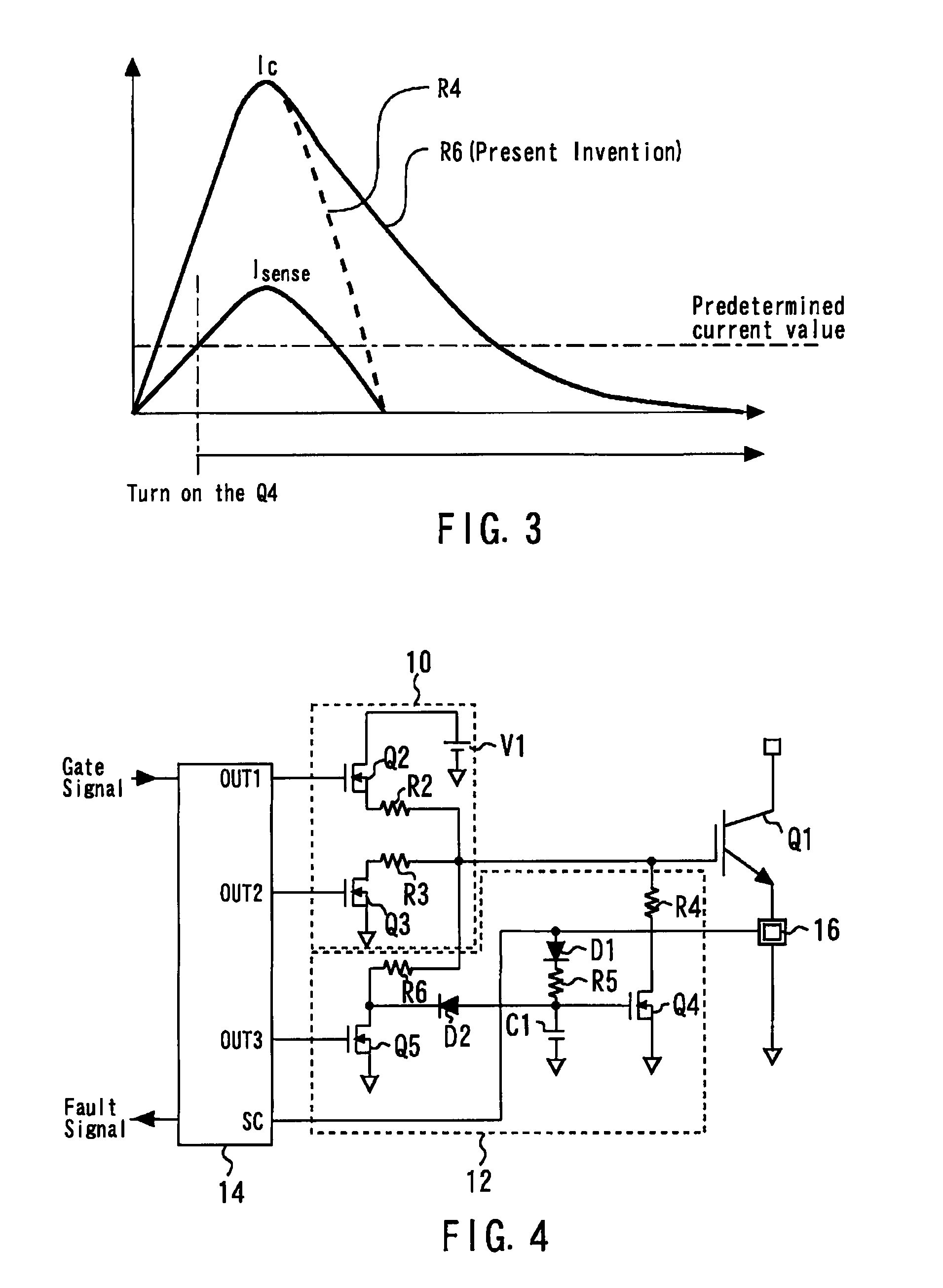Gate circuit
a gate circuit and gate technology, applied in the field of gate circuits, can solve the problems of surge voltage, rapid decrease of current (di/dt) in power devices, etc., and achieve the effect of slowing down the current (di/dt) and quick reducing the excessive current flowing
- Summary
- Abstract
- Description
- Claims
- Application Information
AI Technical Summary
Benefits of technology
Problems solved by technology
Method used
Image
Examples
first embodiment
[0025]FIG. 1 is a circuit diagram of a gate circuit in accordance with a first embodiment of the present invention. The gate circuit includes a normal operation circuit 10, a protection circuit 12, and a controller integrated circuit 14. The gate circuit controls the voltage applied to the gate of a power device Q1. It should be noted that the power device Q1 is provided with an emitter sense terminal. A current detection shunt resistance R1 is connected to the emitter sense terminal. The normal operation circuit 10, the protection circuit 12, and the controller integrated circuit 14 will be described in detail.
[0026]The normal operation circuit 10 includes a gate resistive element R2 connected to the gate. An on-switching device Q2 is connected to the gate resistive element R2. The on-switching device Q2 is connected between a power supply V1 and the gate resistive element R2. That is, this on-switching device Q2 is used to permit and prevent the application of a voltage through th...
second embodiment
[0041]FIG. 6 is a circuit diagram of a gate circuit in accordance with a second embodiment of the present invention. The following description of this gate circuit will be primarily directed to the differences from the gate circuit of the first embodiment. The turn-off delay means of the gate circuit of the second embodiment is formed by discrete components. That is, this gate circuit differs from that of the first embodiment in that the controller integrated circuit is replaced by discrete components.
[0042]The gate circuit of the second embodiment includes a differential amplifier 20. The differential amplifier 20 amplifies the difference between the emitter sense voltage of the power device Q1 and the output voltage of a power supply V2. The output of the differential amplifier 20 is input to a flip-flop circuit 22. An output of the flip-flop circuit 22 is input to one input of an AND gate 24. The other input of the AND gate 24 receives the gate drive signal (Gate Signal). The out...
third embodiment
[0046]FIG. 9 is a circuit diagram of a gate circuit in accordance with a third embodiment of the present invention. In this gate circuit, two resistances are connected in parallel between the power supply V1 and the gate of the power device Q1. Specifically, these resistances are a first gate resistive element R2 and a second gate resistive element R7 having a greater resistance value than the first gate resistive element R2. A first on-switching device Q2 is connected to the first gate resistive element R2. The first on-switching device Q2 is used to permit and prevent the application of a voltage through the first gate resistive element to the gate of the power device Q1. On the other hand, a second on-switching device Q7 is connected to the second gate resistive element R7. The second on-switching device Q7 is used to permit and prevent the application of a voltage through the second gate resistive element R7 to the gate of the power device Q1.
[0047]One and of a resistive element...
PUM
 Login to View More
Login to View More Abstract
Description
Claims
Application Information
 Login to View More
Login to View More - R&D
- Intellectual Property
- Life Sciences
- Materials
- Tech Scout
- Unparalleled Data Quality
- Higher Quality Content
- 60% Fewer Hallucinations
Browse by: Latest US Patents, China's latest patents, Technical Efficacy Thesaurus, Application Domain, Technology Topic, Popular Technical Reports.
© 2025 PatSnap. All rights reserved.Legal|Privacy policy|Modern Slavery Act Transparency Statement|Sitemap|About US| Contact US: help@patsnap.com



